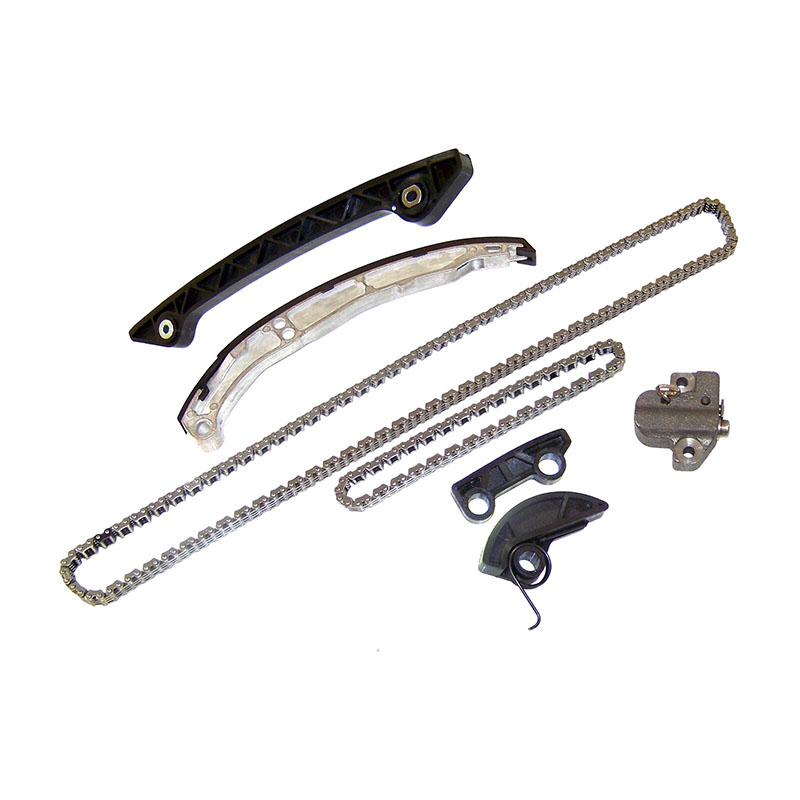Timing Chain Kit vs. Timing Belt Kit: Key Differences and Benefits
2024-06-05
In the realm of automotive maintenance, understanding the distinctions between a timing chain kit and a timing belt kit is crucial for both vehicle performance and longevity. Both kits play a pivotal role in synchronizing the engine’s internal components, but they differ significantly in construction, durability, and maintenance requirements. This blog explores the key differences between a timing chain kit and a timing belt kit, highlighting the benefits and drawbacks of each.
Understanding Timing Systems
Before delving into the differences, it’s important to understand the role of timing systems in an engine. Both timing chains and timing belts connect the crankshaft to the camshaft(s), ensuring that the engine’s valves open and close at the correct times during each cylinder’s intake and exhaust strokes. This precise synchronization is essential for optimal engine performance and efficiency.
Key Differences Between Timing Chain Kits and Timing Belt Kits
1. Material and Construction
2. Durability and Lifespan
3. Maintenance Requirements
4. Noise Levels
5. Cost and Replacement
6. Applications and Preferences
1. Material and Construction
Timing Chain Kit:
- Material: Typically made of metal, such as steel or alloy.
- Construction: Comprises a robust chain, metal gears/sprockets, tensioners, guides, and often includes seals and gaskets.
- Design: Built to withstand high stress and temperature variations.
Timing Belt Kit:
- Material: Made of reinforced rubber or composite materials.
- Construction: Includes a rubber belt with teeth, tensioners, pulleys, and sometimes water pumps.
- Design: Designed to be lightweight and flexible but still strong enough to maintain timing precision.
2. Durability and Lifespan
Timing Chain Kit:
- Durability: Highly durable due to its metal construction.
- Lifespan: Typically lasts the lifetime of the engine, often exceeding 100,000 miles with proper maintenance.
- Wear and Tear: Less prone to degradation from heat and oil.
Timing Belt Kit:
- Durability: Less durable compared to chains; susceptible to wear from heat and contaminants.
- Lifespan: Usually requires replacement every 60,000 to 100,000 miles, depending on the manufacturer’s recommendations.
- Wear and Tear: Prone to cracking, stretching, and breaking over time.
3. Maintenance Requirements
- Maintenance: Requires less frequent maintenance; mostly inspected during regular engine service.
- Adjustment: Tensioners and guides may need occasional checking but are generally low-maintenance.
Timing Belt Kit:
- Maintenance: Requires regular inspection and periodic replacement as part of routine maintenance.
- Adjustment: Tension and alignment need regular checks, and the belt must be replaced according to the vehicle’s maintenance schedule.
4. Noise Levels
Timing Chain Kit:
- Noise: Generally noisier due to metal-to-metal contact.
- Noise Management: Modern engines use chain guides and tensioners to minimize noise.
Timing Belt Kit:
- Noise: Quieter operation due to the rubber composition.
- Noise Management: Less noise inherently, making it favorable for quieter engine designs.
5. Cost and Replacement
Timing Chain Kit:
- Cost: Typically more expensive upfront due to the metal components.
- Replacement: Less frequent, but when required, it can be a complex and costly procedure.
Timing Belt Kit:
- Cost: Generally cheaper than timing chains.
- Replacement: Needs more frequent replacement, which adds to the long-term maintenance cost.
Conclusion
Choosing between a timing chain kit and a timing belt kit involves considering factors such as durability, maintenance, noise, cost, and specific vehicle requirements. Timing chain kits offer long-term durability and less frequent maintenance, making them ideal for heavy-duty and high-performance engines. On the other hand, timing belt kits provide quieter operation and lower initial costs, suited for many standard vehicle engines but require regular replacement.
Understanding these differences helps in making informed decisions about vehicle maintenance and performance. Whether you opt for a timing chain or timing belt, regular inspection and adherence to the manufacturer's maintenance schedule are crucial for ensuring the longevity and efficiency of your engine.



